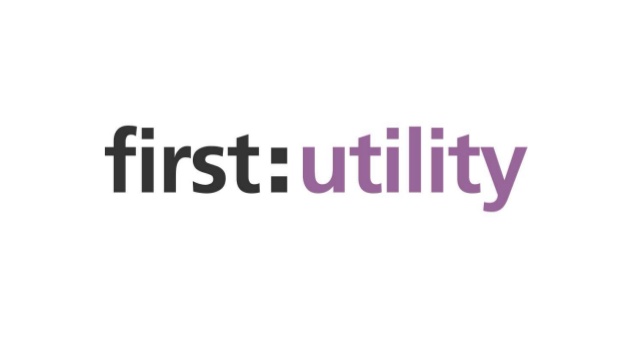You Ask, We Answer: What are the Problems and Risks of NGINX?
Here at Sirius, we often get asked, “What are the problems with NGINX?” This is a very good question, and one that deserves a clear, honest answer. We understand that when making a technology decision, buyers often worry more about what might go wrong than what will go right.
We want to be upfront: NGINX is celebrated as a top-tier web server, reverse proxy, and load balancer, largely due to its high-performance, event-driven, non-blocking architecture. However, this strength is also the source of unique operational fragilities. The problems encountered by users are typically not inherent flaws in the core software, but rather the result of an impedance mismatch between its asynchronous design and common operational mistakes, such as configuration errors and underlying synchronous system behaviors.
This article will explain the critical architectural constraints, operational risks, and security vulnerabilities associated with NGINX, helping you understand the precision and expertise required for stable deployments. We aim to be fiercely transparent, allowing you to address the "elephant in the room" and make the most informed decision possible.
The Core Problem: Architectural Limitations and the Blocking Vulnerability
NGINX’s market-leading performance is built on its single-threaded event loop within each worker process, which uses non-blocking I/O to manage vast numbers of concurrent connections. This model is highly efficient because it avoids the resource-heavy context switching that burdens traditional thread-per-request servers.
However, this reliance on non-blocking operations creates a highly sensitive system, making it vulnerable to asynchronous impedance mismatch. The entire worker process is paralyzed (blocked) if any operation within it becomes synchronous:
System Stall: Since a single worker may be managing thousands of connections, a single blocking event—such as slow disk access, inefficient logging, or a CPU-intensive task—stalls service delivery for all clients managed by that worker until the operation completes.
Pristine Environment Mandate: This vulnerability mandates that users maintain a pristine, non-blocking environment, which is challenging to guarantee across complex, mission-critical application stacks.
Operational Fragility: Configuration Complexity and Fatal Mistakes
The highly specialized efficiency of NGINX means its performance is exquisitely sensitive to configuration details. The configuration environment, often driven by the intricate nginx.conf file, poses significant challenges for beginners. Mistakes that are minor in other servers can be catastrophic in NGINX, leading to system failures or nullifying all performance gains.
Fatal File Descriptor (FD) Mismanagement
A frequently overlooked constraint that strictly limits NGINX’s scalability is the operating system's maximum number of File Descriptors (FDs) available to each process.
Resource Ceiling: Although the
worker_connectionsdirective sets the maximum connections NGINX workers can handle, the ultimate bottleneck is the OS limit, which commonly defaults to 1024.Rapid Consumption: When NGINX operates as a reverse proxy, it consumes at least two FDs per request (one for the client, one for the upstream server). For serving static content, an FD is needed for the client connection and one for each file served (meaning a single web page often consumes many FDs).
Consequence: Failure to raise this limit using the
worker_rlimit_nofiledirective in the main configuration context causes hard connection failures and service instability when the concurrency ceiling is reached. Best practice requires settingworker_rlimit_nofileto at least twice the value ofworker_connections.
The Buffer Bypassing Mistake
One of the most detrimental misconfigurations is the anti-pattern of disabling proxy buffering using
proxy_buffering off.Destroys Architecture: This setting is often used in a misguided attempt to reduce perceived client latency. However, disabling buffering forces the NGINX worker process to receive upstream response data and transmit it to the client in a blocking, synchronous fashion. This completely subverts the non-blocking architecture, often resulting in slower transfers and prolonged blocking times.
Feature Nullification: Disabling buffering renders key features such as caching, rate limiting, and request queuing inoperable, regardless of whether they were configured elsewhere.
Configuration Inheritance and Opacity
The configuration environment demands precise mastery, particularly concerning how directives are inherited. For array directives like
proxy_set_headeroradd_header, a setting in a child context (e.g., alocation{}block) completely overrides (rather than merges with) values defined in the parent context (e.g., thehttp{}block). This often results in critical headers (like security or tracing headers) being silently dropped, leading to unexpected application behavior or security issues.
Mitigation Paradoxes and Dynamic Content Tax
NGINX's structure presents unique challenges when handling dynamic content and synchronous operations:
Dynamic Content Tax: NGINX is optimized for static content and reverse proxying; handling dynamic content (unlike servers that embed interpreters) requires complex configuration and delegation to external processors like PHP-FPM. This approach requires meticulous setup of inter-process communication (IPC) and results in increased architectural sprawl and resource consumption for IPC, amplifying configuration burden.
Thread Pool Issues: To mitigate the unavoidable synchronous operations (e.g., slow disk I/O), NGINX introduced thread pools. However, this strategy requires significant memory duplication ("share-nothing" model) to maintain thread safety, partially negating NGINX's traditional low memory advantage. Furthermore, freeing up the event loop allows busy workers to accept even more new connections, potentially leading to job queue saturation and localized latency spikes.
Security Landscape and Continuous Patching Imperatives
Like all widely deployed software, NGINX has a history of addressing critical vulnerabilities, necessitating strict adherence to update schedules for production deployments.
Evolving Attack Surface: Recent security advisories (2023–2024 focus) show that vulnerabilities have shifted from the core HTTP handling to specialized features and complex protocol implementations. For instance, the MP4 module (CVE-2024-7347) and the MQTT Filter module (CVE-2024-39792) were recently found vulnerable to Denial of Service (DoS) risks caused by buffer over-reads or memory resource exhaustion.
Security Misconfigurations: Operational security failures frequently expose NGINX deployments, particularly the failure to secure the NGINX status metrics page (typically
/nginx_status). This endpoint provides internal visibility into server utilization and must be strictly restricted via authentication and IP-based access control.
Conclusion: NGINX Demands Expertise and Precision
The problems associated with NGINX stem fundamentally from the high degree of precision required for deployment. NGINX is the definitive choice for infrastructure components demanding maximum throughput and high concurrency when the workload is predictably non-blocking (e.g., serving static assets, caching, L7 routing).
However, its configuration fragility and architectural dependence on a non-blocking environment suggest that NGINX is less suitable for organizations lacking the deep operational expertise necessary to rigorously tune OS limits and consistently enforce configuration mandates. Such organizations may find a simpler architecture easier to manage, even if it sacrifices some of NGINX's efficiency benefits.
For organizations committed to stable NGINX adoption, two paths are recommended:
Commercial Support (NGINX Plus): Purchasing commercial support offers access to proprietary operational features and crucial Service Level Agreements (SLAs). This guarantees a guaranteed time-to-resolution, mitigating the unquantified downtime risk inherent in self-managing the Open Source version.
Operational Hardening Checklist: Organizations self-managing NGINX must adhere to a strict hardening process:
FD Optimization: Set
worker_rlimit_nofilein the main configuration context to at least twice the value ofworker_connections.Asynchronous Integrity: Maintain proxy buffering (
proxy_buffering on) to prevent synchronous blocking of the worker process.Security Posture: Strictly restrict access to status metrics (
/nginx_status) to trusted internal networks.
















































